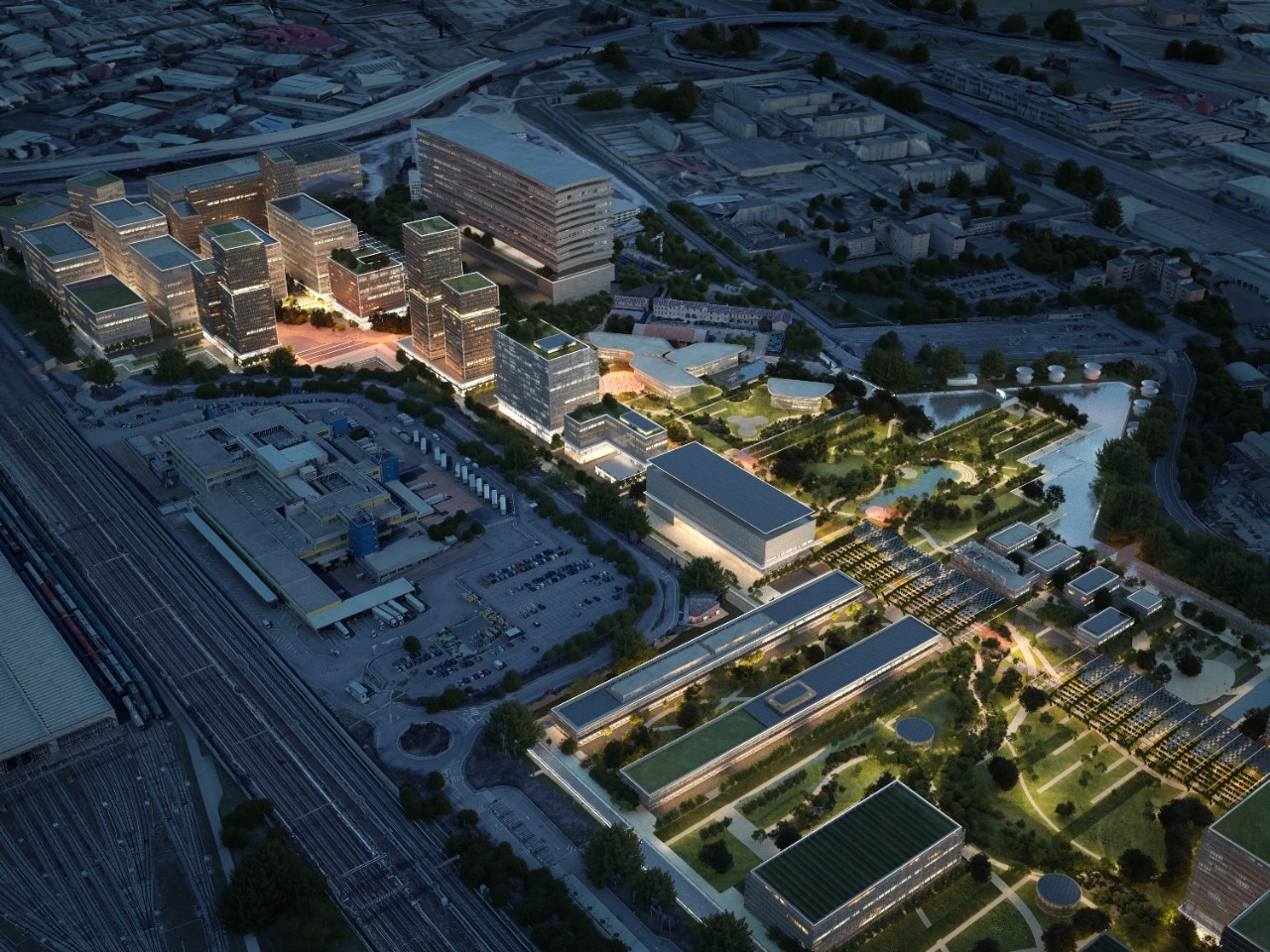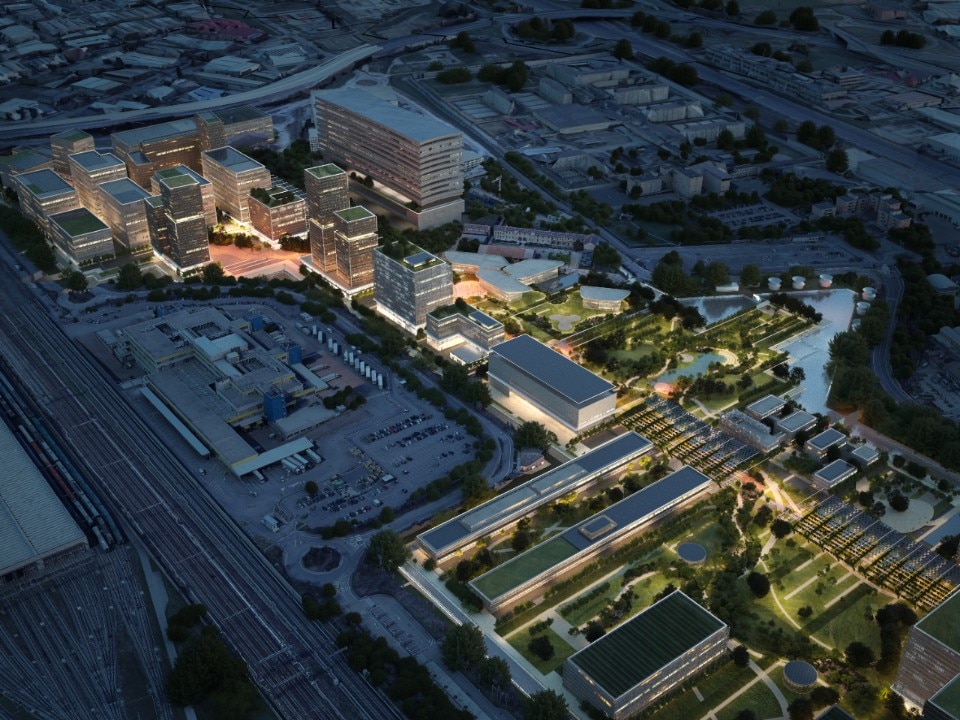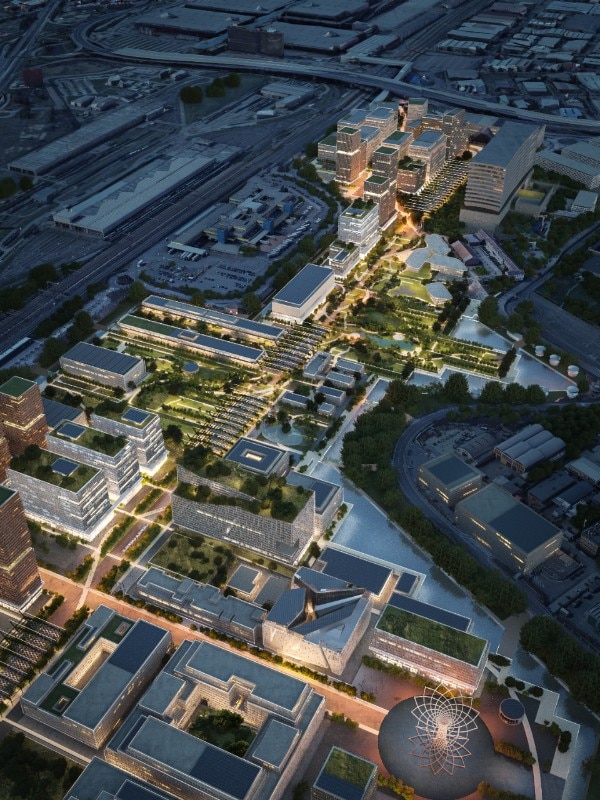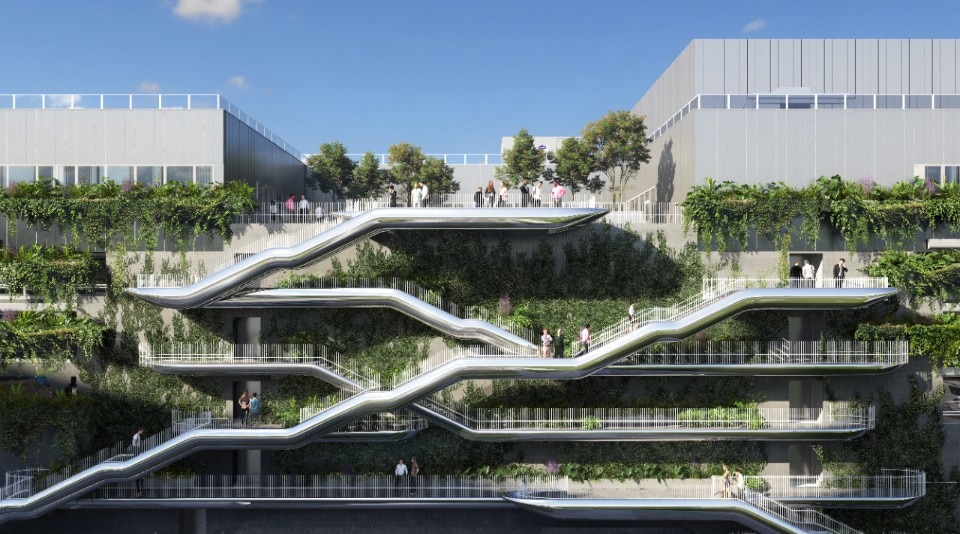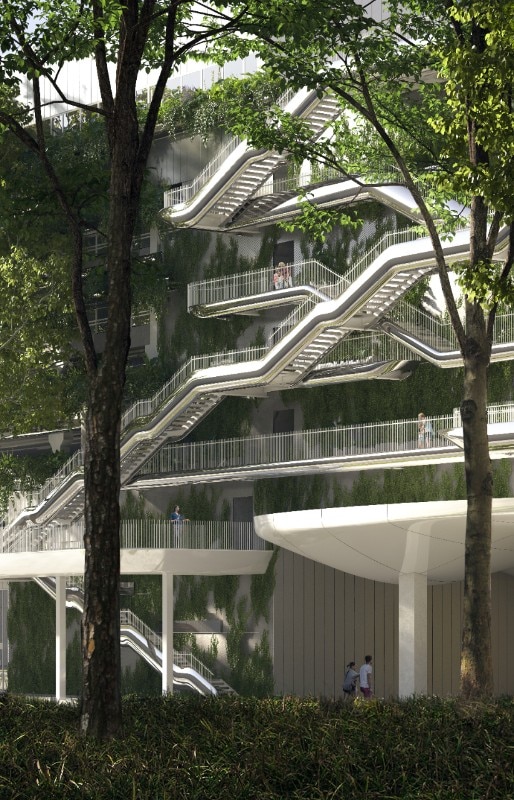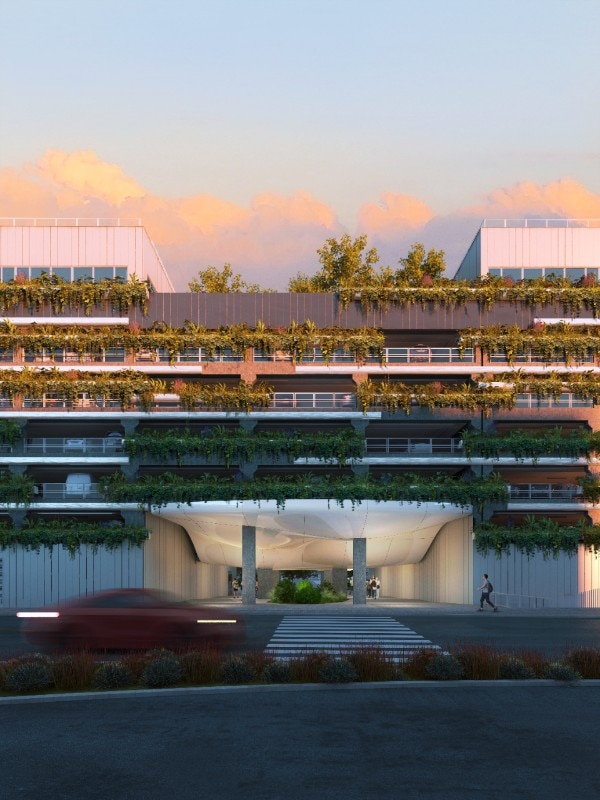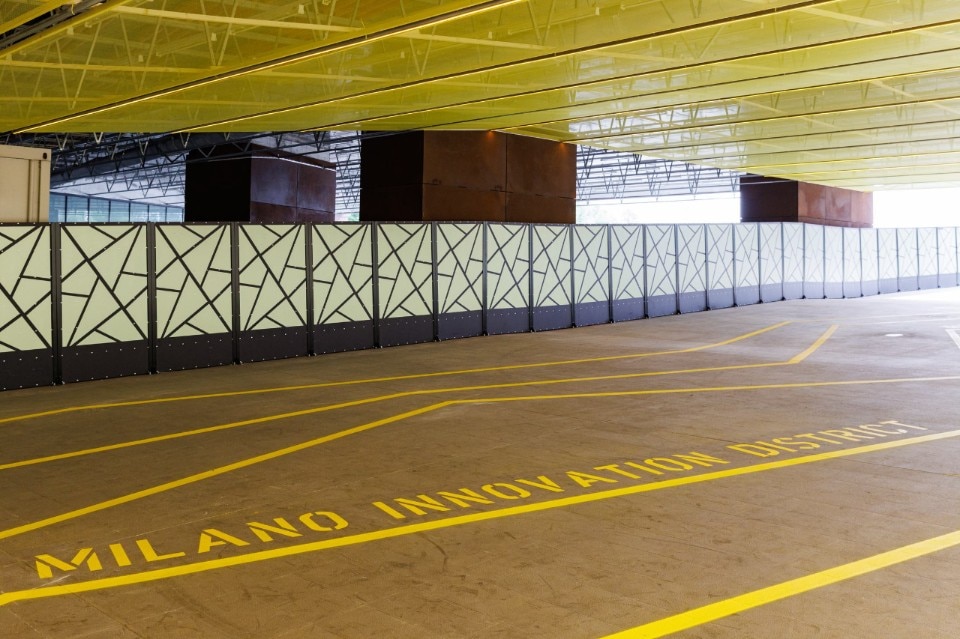The project for the West Gate of MIND - Milano Innovation District, the initiative by Lendlease whose masterplan and common ground were developed by Mario Cucinella Architects, has been unvealed. Located in the Municipality of Rho, in the area that hosted Expo Milano 2015, it will have as its focal point a facility infrastructure dubbed MoLo, an acronym that stands for Mobility and Logistic hub.
Designed by MAD architects – the studio signs the broken facade (170 meters long and 50 meters wide) –, by architect Andrea Nonni, Open Project Srl, and Progeca Srl, the project will be a real physical hinge between Rho and Milan. With eight floors above ground and a basement, the MoLo reaches a maximum height of 28.5 meters and extends in length for about 170 meters for a width of 50, with a gross external area of about 68,800 square meters and a gross area equal to about 11,195 square meters.
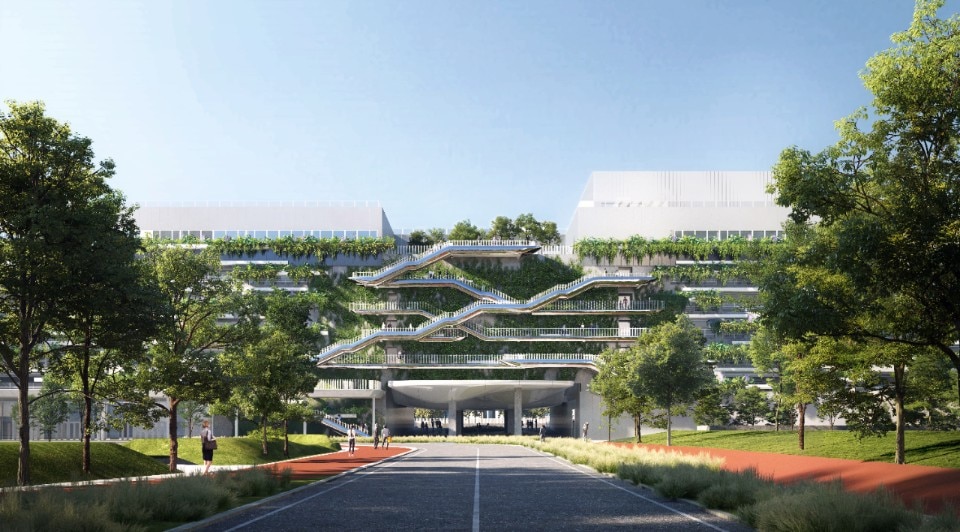
The MoLo – placed at the end of the Decumano, where once there was Pavilion Zero – will be the fifth and gateway for those arriving at MIND from Rho and the main routes, but also a focal point for the surrounding context. With 3 thousand square meters of commercial spaces on the ground floor, but also laboratories, offices, and a supermarket, the MoLo will be a connection hinge with the main mobility infrastructures on the Rho side, a multi-story car park that will host 1500 parking spaces (distributed on 5 of the eight levels above ground, plus the basement), and also an urban attraction, thanks to the functional mix inside. Junction and landing place, at the same time, a place to leave the cars to experience the city of the future, car-free. The MoLo, then, is also the energy accumulator of the new district, with a photovoltaic field of 8 thousand square meters of panels in coverage.
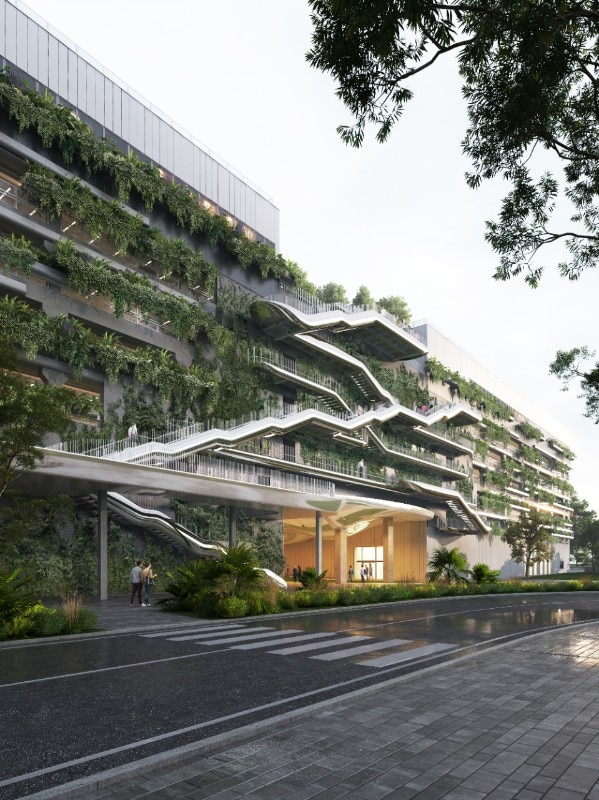
The building is designed with a prefabricated concrete frame structure, following the Design for manufacturing and assembly (DfMA) method, aimed at reducing the complexity of operations both in the design and production phase and assembly. The structural grid follows spans mainly of 8 or 8.5 meters, for an extension of 16.5 meters: structural partitions and curtain walls are provided, made with prefabricated or dry systems, and designed in compliance with energy, acoustic, and LEED requirements.
The West Gate area project aims to follow MIND’s core values and vision: to bring together educational, research, creative, cultural, and commercial activities to create an innovative district. The MIND masterplan, designed by Mario Cucinella Architects, was also set up to encourage and enhance sustainable and light mobility, with spaces on a human scale. In this perspective, the MoLo is conceived as the first passage that allows accommodating the cars that have to reach the area, offering most of its surface for the construction of appurtenant parking areas for the different lots of West Gate and the public ones serving the activities planned in the building, but also the adjacent Galeazzi Hospital. The car park also provides the necessary arrangements for electric recharge for each parking space and stalls reserved for low-emission electric vehicles.
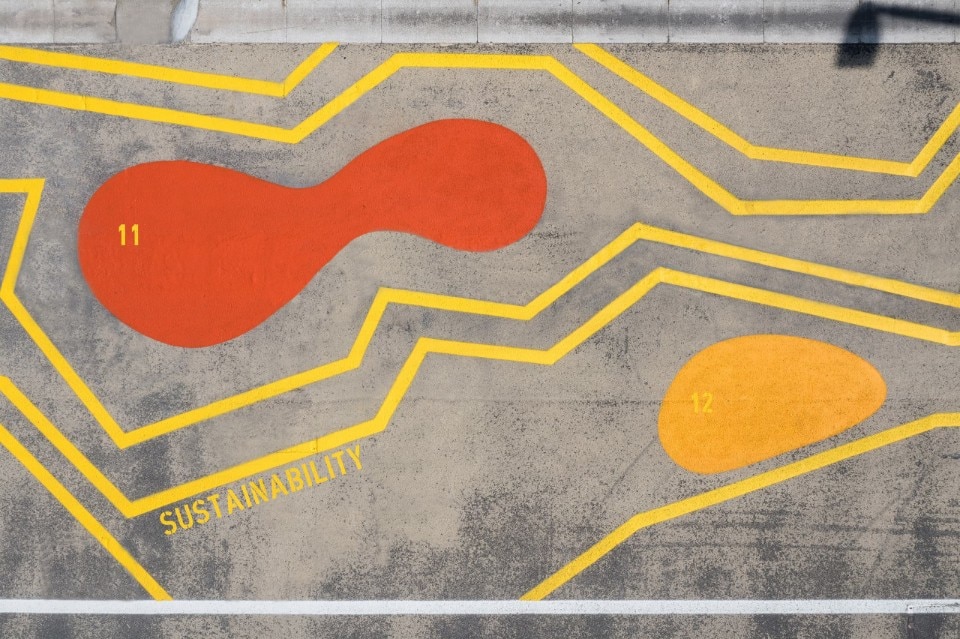
For LendLease, Studio Migliore+Servetto will take care of the art direction of all urban interventions in public areas at the level of the common ground of MIND, creating a series of narrative installations with a strong environmental message. The first to be unveiled was MIND Flow: a street painting intervention 1.8 km long for 15 thousand square meters, which accompanies visitors from the exit of the subway to the “Tree of Life”. The idea behind the concept is that in a city the spaces of movement can also be spaces of communication. The installation crosses the MIND site in its entirety, connecting all the nodal points of the Decumano through a continuous chromatic flow in the shade of sulfurous yellow, which visually defines the cycle-pedestrian path, connecting the interventions, green areas, and construction site areas. Within the graphic flow are woven 100 words grouped into 7 carpets, divided into thematic areas, which refer to the values that identify MIND: “City of the future”, “The mind challenges”, “The future of health”, “Cross-pollination”, “The human ecosystem”, “The green & blue infrastructure”, “Research”.


